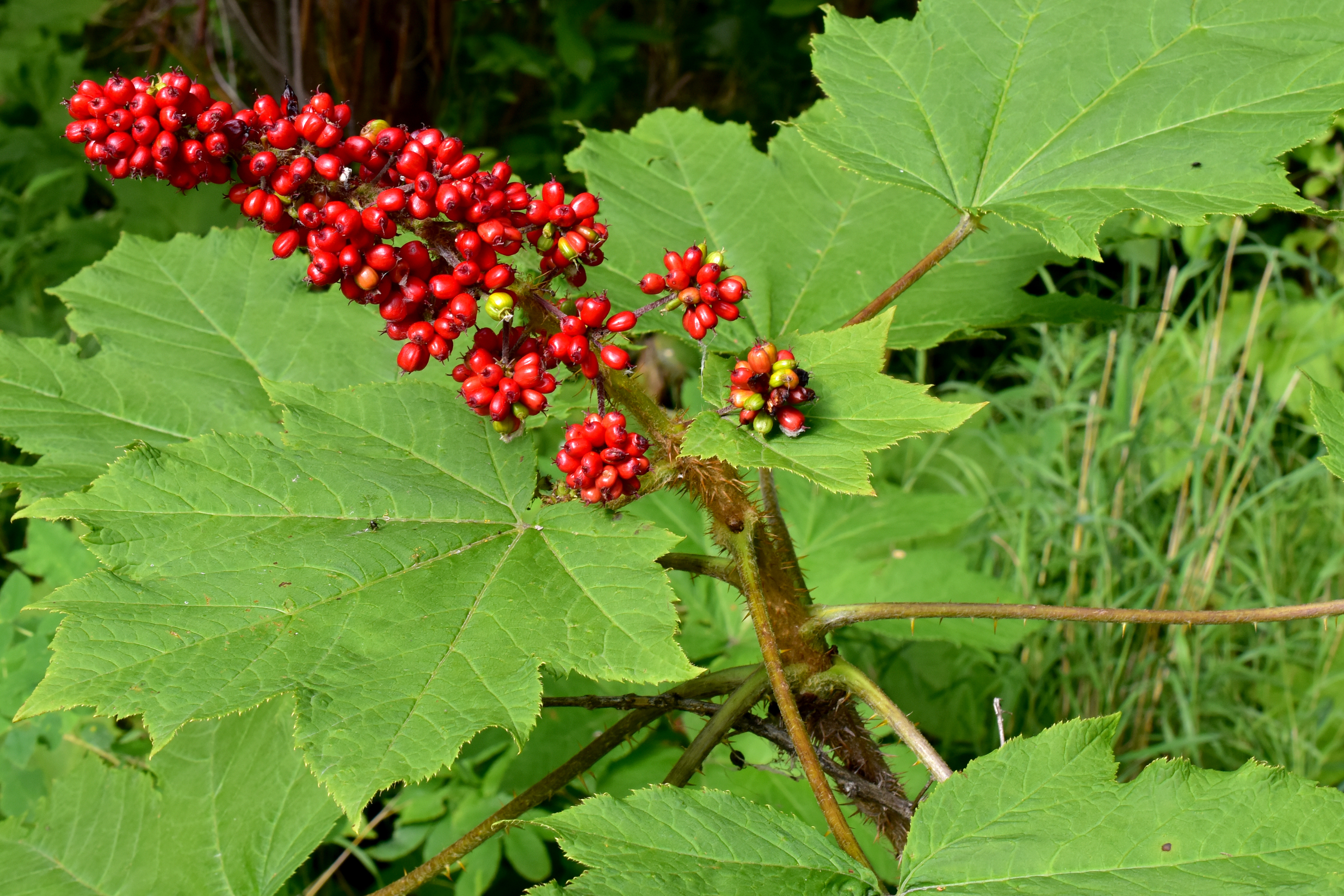Devil's club
(Oplopanax horridus)

Description
Devil's club or devil's walking stick (Oplopanax horridus, Araliaceae; syn. Echinopanax horridus, Fatsia horrida) is a large understory shrub native to the rainforests of the Pacific Northwest, but also disjunct on islands in Lake Superior. It is noted for its large palmate leaves and erect, woody stems covered in noxious and irritating spines. It is also known as Alaskan ginseng and similar names, although it is not a true ginseng. Devil's club generally grows to 1 to 1.5 metres (3 ft 3 in to 4 ft 11 in) tall. Some stands located in rainforest gullies or moist, undisturbed areas can reach heights of 3 metres (9.8 ft) to 5 metres (16 ft) or more. The spines are found along the upper and lower surfaces of veins of its leaves as well as the stems. The leaves are spirally arranged on the stems, simple, palmately lobed with 5-13 lobes, 20 to 40 centimetres (7.9 to 15.7 in) across. The flowers are produced in dense umbels 10 to 20 centimetres (3.9 to 7.9 in) diameter, each flower small, with five greenish-white petals. The fruit is a small red drupe 4 to 7 millimetres (0.16 to 0.28 in) diameter. The plant is covered with brittle yellow spines that break off easily if the plants are handled or disturbed, and the entire plant has been described as having a "primordial" appearance. The plants are slow growing and take many years to reach seed-bearing maturity; this makes them very sensitive to human impact as they do not reproduce quickly. This species usually grows in moist, dense forest habitats, and is most abundant in old-growth conifer forests in the Pacific Northwest. It is found from southcentral Alaska south to Oregon, and eastward to western Alberta and Montana. Disjunct native populations also occur over 1,500 kilometres (930 mi) away in Lake Superior on Isle Royale and Passage Island, Michigan and Porphyry Island and Slate Island, Ontario. Devil's club reproduces by forming clonal colonies by means of rhizomes. What can appear to be several different plants may actually have all been one plant originally, with the clones detaching themselves after becoming established by laying down roots.
Taxonomic tree:







